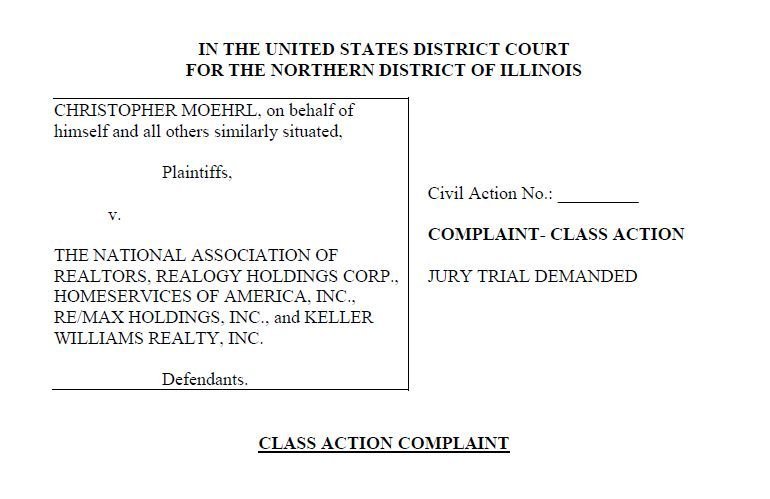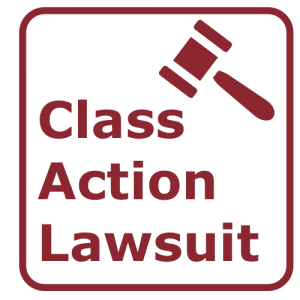Exploring Class Action Lawsuits: What You Required to Know
Course action suits have actually come to be significantly widespread in today's lawful landscape, with people joining forces to prosecute against companies and corporations. In this conversation, we will certainly discover the ins and outs of course action claims, clarifying their definition, the requirements for declaring, and the prospective advantages and drawbacks entailed. In addition, we will certainly look into the actions associated with a course activity claim and examine some current spots situations that have actually shaped this area of legislation. Recognizing the complexities and nuances of course activity claims is vital for any person looking for justice in a cumulative fashion, so allow's begin our expedition with each other.
The Meaning of Class Activity Claims
A course activity legal action is a legal activity submitted by a group of people who have comparable cases against an offender. Class action legal actions are typically brought when the number of possible complainants is also large for individual claims to be useful.
Among the crucial elements of a course activity suit is that the lead complainant, likewise referred to as the course agent, represents the rate of interests of all the course members. The court selects the lead complainant based on their ability to rather and effectively represent the course. The lead plaintiff works closely with the class activity lawyer to construct a strong case and look for payment or other treatments in behalf of the entire class.
In order for a course activity claim to proceed, the court must certify the class. This implies that the court establishes that the lawsuit satisfies specific demands, such as numerosity (a large enough variety of class participants), commonness (common inquiries of law or fact), typicality (the insurance claims of the lead plaintiff are normal of the class), and competence of depiction (the lead plaintiff and class counsel are qualified of standing for the course's rate of interests) When the course is certified, the suit can move forward, and any judgment or negotiation got to will apply to all class participants unless they pick to opt-out.
Course activity claims offer a crucial purpose in giving access to justice for people that might not have the sources to pursue their cases individually. They additionally advertise effectiveness in the legal system by consolidating comparable cases into a solitary action, lowering the burden on both the court and the parties involved.
Demands for Submitting a Class Activity Suit

One more demand is that the class needs to be sufficiently numerous. The precise variety of class members called for may differ relying on the territory and the nature of the case. It is generally anticipated that the course needs to be big enough that signing up with all the private complainants right into a single lawsuit is much more effective than having multiple different legal actions.
In addition, it is crucial that the course representative, who is the specific or entity bringing the legal action in behalf of the class, has common insurance claims and defenses to those of the class participants. The representative must additionally be able to properly and fairly represent the rate of interests of the entire course.

Advantages and Disadvantages of Class Activity Legal Actions
Course action suits use both advantages and drawbacks for complainants and defendants entailed in the legal procedure. On the one hand, one of the considerable benefits of course action suits is that they provide a cost-efficient and effective way for individuals with similar insurance claims to seek justice jointly. By consolidating many similar instances right into one claim, class actions enhance the lawful process and save time and resources for both defendants and plaintiffs.
An additional benefit of class action suits is that they allow individuals with limited sources to seek payment for their damages. In instances where the possible recovery is little, private suits might not be economically feasible. However, by joining pressures in a course action, plaintiffs can pool their sources and raise their chances of obtaining a fair resolution.
Additionally, class actions can promote social adjustment by holding firms responsible for their activities. By bringing interest to prevalent transgression or faulty items, course activities can push business to alter their practices, boost item security, or execute reforms.
However, class actions additionally have downsides. One prospective disadvantage is that private complainants may have restricted control over the litigation procedure and the best end result of the case. The lead plaintiffs and their lawyers generally make key decisions in behalf of the entire class, which might not always align with the specific rate of interests of each course member.
Furthermore, class activities can be extensive and lengthy, typically taking years to reach a resolution. The intricacy and dimension of these legal actions can lead to hold-ups and long term litigation, which can be irritating for both plaintiffs and offenders seeking a timely resolution.
Steps Involved in a Course Activity Suit
The procedure of a course activity lawsuit typically begins with the identification of a potential class and the filing of a problem. As soon as a group of individuals that share comparable claims against a defendant is identified, the lead plaintiff, or course agent, submits an issue on part of the entire course. This complaint details the claimed misdeed and looks for problems or other alleviation for all members of the class.
After the complaint is submitted, the court will certainly identify whether the case satisfies the requirements for course certification. These requirements normally include numerosity (a huge enough class), commonality (comparable lawful claims), typicality (the lead complainant's cases are depictive of the course), and competence of representation (the lead complainant and their attorney can adequately stand for the class's rate of interests)
If the court licenses the course, notice is supplied to all potential class participants, providing them the opportunity to opt-out if they wish to seek their very own specific insurance claims - BioVie class action lawsuit. If an enough number of course participants continue to be, the instance will proceed to the exploration phase, where both sides collect evidence and details appropriate to the insurance claims
Adhering to discovery, the parties might participate in negotiation negotiations or continue to test. If the instance mosts likely to test and the course prevails, the court will certainly establish the appropriate problems or alleviation to be awarded to the course members.
Current Landmark Course Action Claims
With a strong understanding of the steps associated with a class action lawsuit, it is currently vital to check out some current spots situations that have made a considerable effect in the legal landscape. Archer-Daniels-Midland class action lawsuit. These cases have not just formed the method class activity legal actions are conducted but have actually likewise caused changes in numerous sectors
One such landmark situation is the Volkswagen discharges detraction, which led to the largest course action negotiation in auto history. This deceptiveness influenced millions of customers worldwide, leading to a class activity claim.
An additional significant instance is the Johnson & Johnson talcum powder suit. Thousands of women filed legal actions against the business, declaring that their talcum powder products created ovarian cancer cells.
These recent spots instances demonstrate the power of course activity claims in holding corporations liable for their activities and looking for justice for affected people. They serve as examples of how class action claims can cause substantial modifications and safeguard the civil liberties of customers.
Final Thought
In conclusion, course action suits are a legal device that permits a team of people to jointly seek justice for a common complaint. Recognizing the steps and requirements involved in filing a class action lawsuit is critical for individuals seeking to pursue this lawful avenue.
One of the vital elements of a Future FinTech class action lawsuit class activity legal action is that the lead plaintiff, likewise recognized as the course agent, stands for the interests of all the class members.In order for a class action lawsuit to proceed, the court should accredit the course. This indicates that the court establishes that the legal action fulfills certain requirements, such as numerosity (a large enough number of course participants), commonality (common inquiries of regulation or fact), typicality (the cases of the lead complainant are regular of the course), and competence of depiction (the lead complainant and class advise are capable of representing the course's passions) When the course is certified, the legal action can move onward, and any judgment or negotiation got to will apply to all class participants unless they pick to opt-out.
The process of a class activity lawsuit normally starts with the identification of a prospective course and the declaring of a grievance.